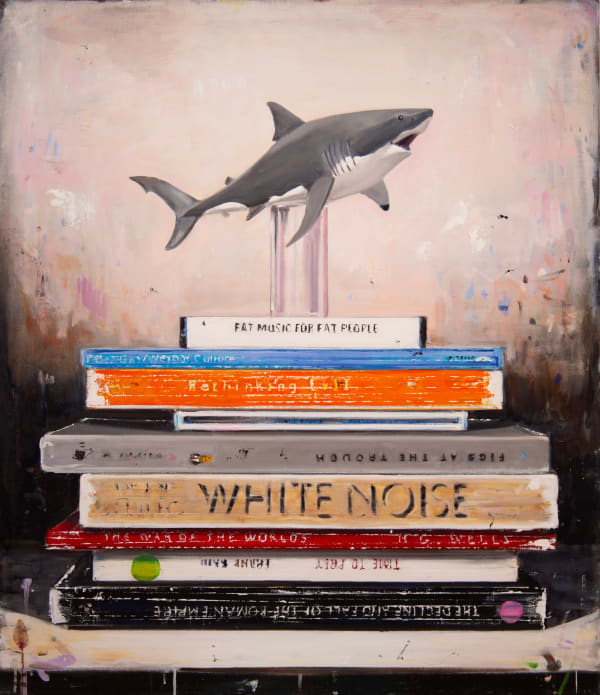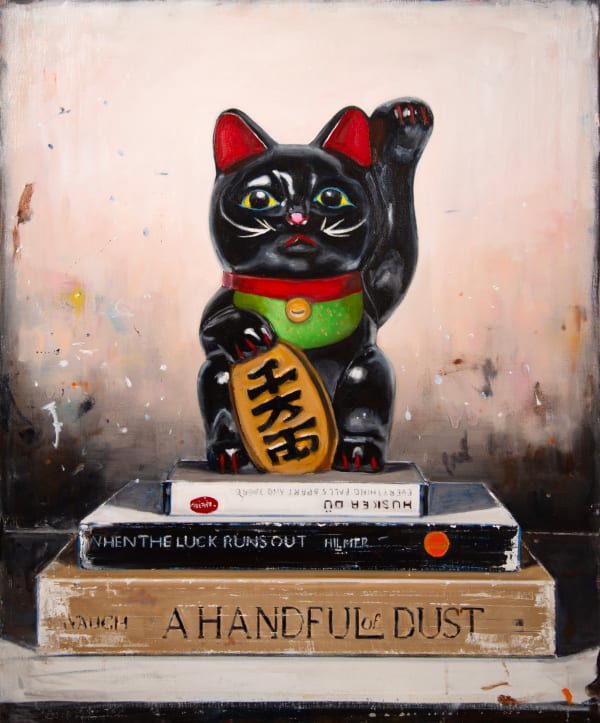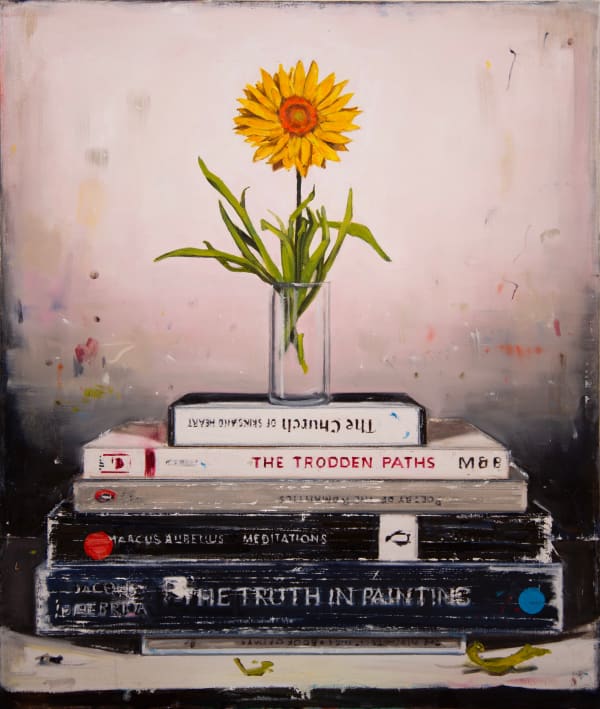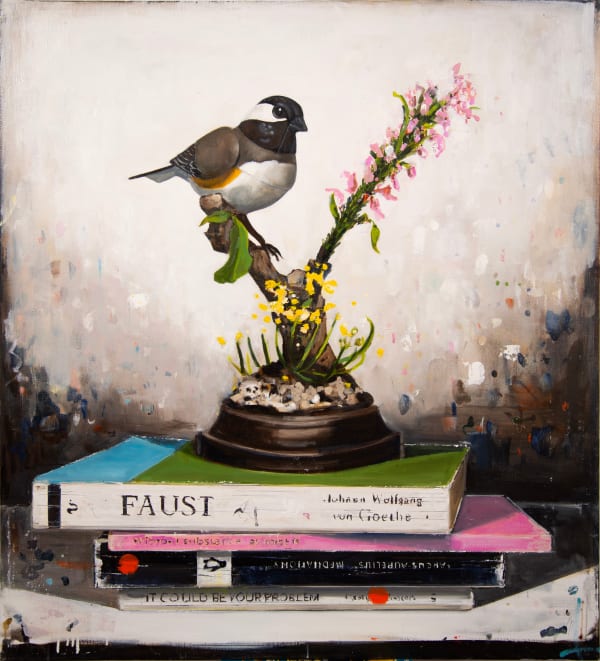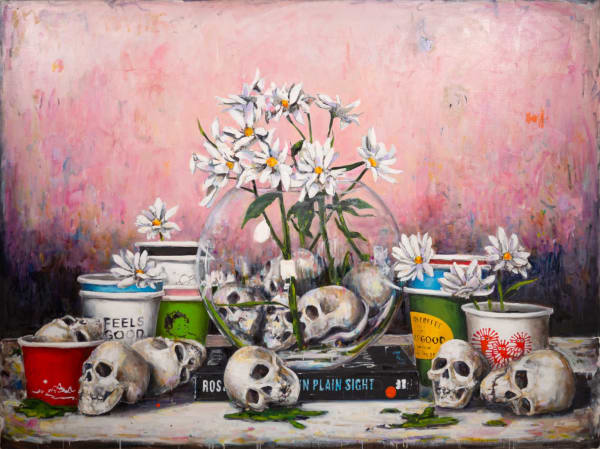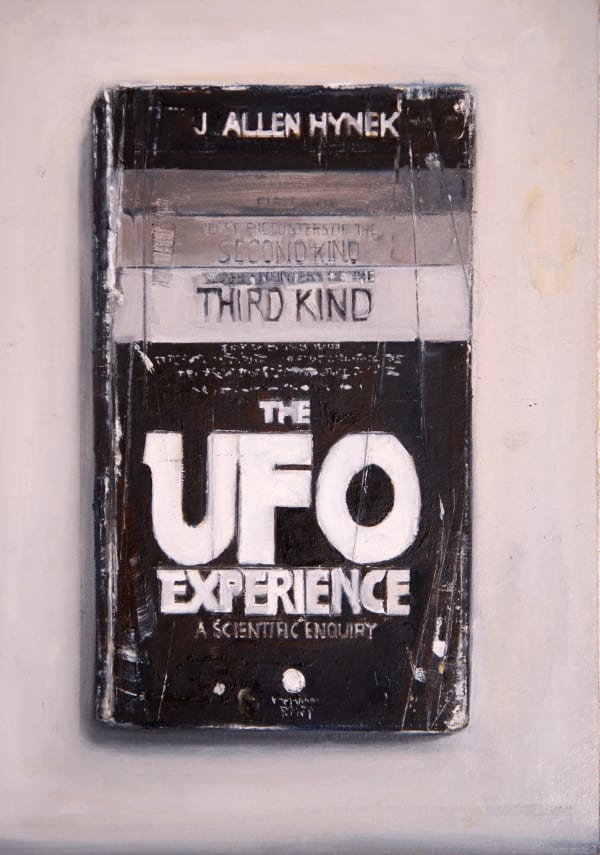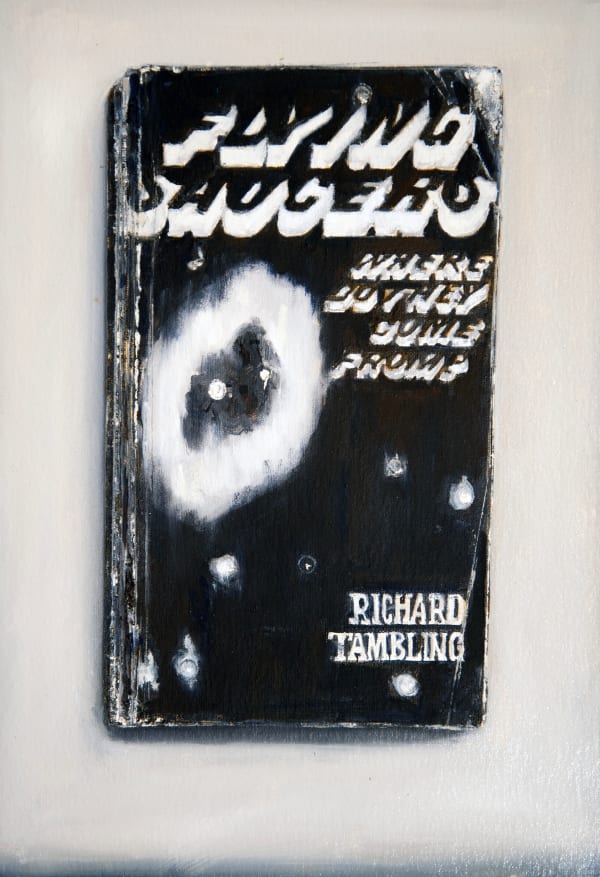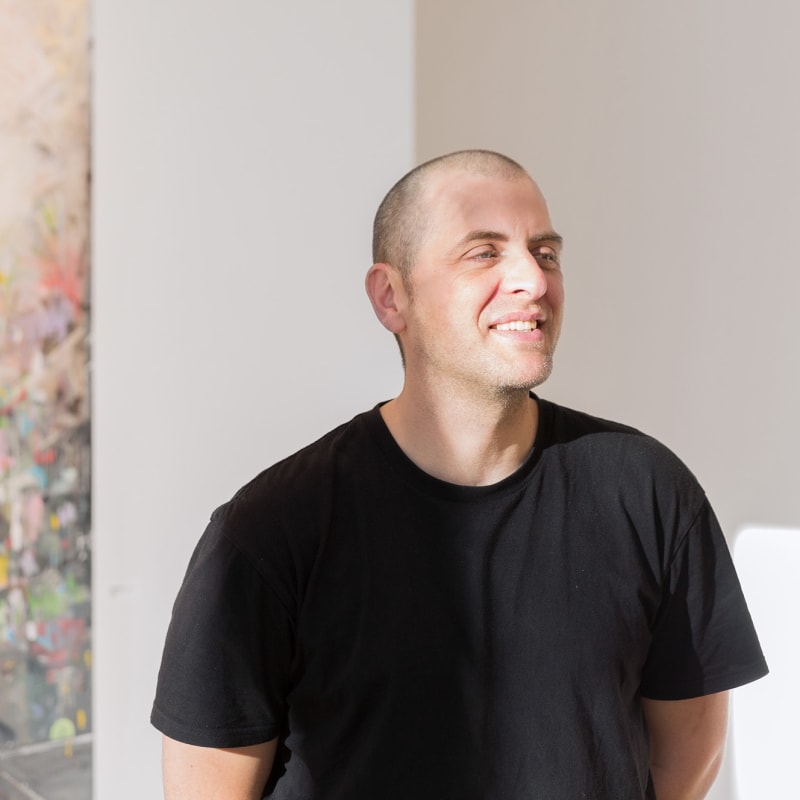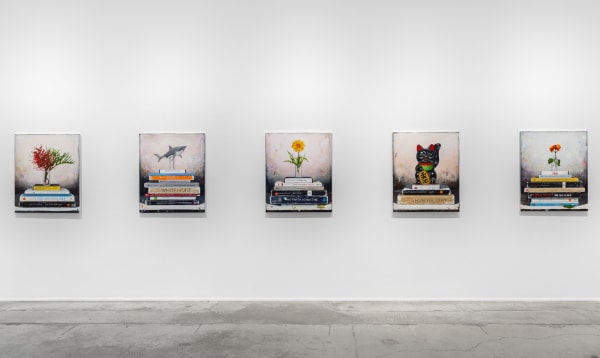Fabrizio Biviano: Monologues
-
 Fabrizio BivianoThe only game in town, 2025oil on Belgian linen137 x 167.5 cmSold
Fabrizio BivianoThe only game in town, 2025oil on Belgian linen137 x 167.5 cmSold -
 Fabrizio BivianoFat music for fat people, 2025oil on Belgian linen91.5 x 76 cmSold
Fabrizio BivianoFat music for fat people, 2025oil on Belgian linen91.5 x 76 cmSold -
 Fabrizio BivianoThe Hidden Persuaders, 2025oil on Belgian linen101.5 x 91.5 cm
Fabrizio BivianoThe Hidden Persuaders, 2025oil on Belgian linen101.5 x 91.5 cm -
 Fabrizio BivianoWhen luck runs out, 2025oil on Belgian linen91.5 x 76 cmSold
Fabrizio BivianoWhen luck runs out, 2025oil on Belgian linen91.5 x 76 cmSold -
 Fabrizio BivianoWe are not alone, 2025oil on Belgian linen101.5 x 91.5 cmSold
Fabrizio BivianoWe are not alone, 2025oil on Belgian linen101.5 x 91.5 cmSold -
 Fabrizio BivianoPoetry of the romantics, 2025oil on Belgian linen91.5 x 76 cmSold
Fabrizio BivianoPoetry of the romantics, 2025oil on Belgian linen91.5 x 76 cmSold -
 Fabrizio BivianoThe Monuments of Mars, 2025oil on Belgian linen91 x 76 cm
Fabrizio BivianoThe Monuments of Mars, 2025oil on Belgian linen91 x 76 cm -
 Fabrizio BivianoHast du etwas Zeit für mich, 2025oil on Belgian linen91.5 x 76 cmSold
Fabrizio BivianoHast du etwas Zeit für mich, 2025oil on Belgian linen91.5 x 76 cmSold -
 Fabrizio BivianoArt is long, and life short, 2025oil on Belgian linen101.5 x 91.5 cmSold
Fabrizio BivianoArt is long, and life short, 2025oil on Belgian linen101.5 x 91.5 cmSold -
 Fabrizio BivianoBecome what you are, 2025oil on Belgian linen91.5 x 76 cmSold
Fabrizio BivianoBecome what you are, 2025oil on Belgian linen91.5 x 76 cmSold -
 Fabrizio BivianoEach new day, 2025oil on Belgian linen91.5 x 76 cm
Fabrizio BivianoEach new day, 2025oil on Belgian linen91.5 x 76 cm -
 Fabrizio BivianoIn the Darkness on the Edge of Town, 2024oil on Belgian linen91 x 76 cmSold
Fabrizio BivianoIn the Darkness on the Edge of Town, 2024oil on Belgian linen91 x 76 cmSold -
 Fabrizio BivianoWe are setting sail to a place on a map from which no one has ever returned, 2024oil on Belgian linen92 x 76 cm
Fabrizio BivianoWe are setting sail to a place on a map from which no one has ever returned, 2024oil on Belgian linen92 x 76 cm -
 Fabrizio BivianoEven my sure things fall through, 2024oil on Belgian linen137 x 183 cm
Fabrizio BivianoEven my sure things fall through, 2024oil on Belgian linen137 x 183 cm -
 Fabrizio BivianoThe heart is a lonely hunter, 2024oil on Belgian linen91 x 76 cmSold
Fabrizio BivianoThe heart is a lonely hunter, 2024oil on Belgian linen91 x 76 cmSold -
 Fabrizio BivianoIf It Wasn't For The Coffee, I'd Have No Identifiable Personality Whatsoever, 2023oil on Belgian linen91 x 76 cm
Fabrizio BivianoIf It Wasn't For The Coffee, I'd Have No Identifiable Personality Whatsoever, 2023oil on Belgian linen91 x 76 cm -
 Fabrizio BivianoUFO Investigations Manual, 2025oil on canvas40.5 x 28.5 cmSold
Fabrizio BivianoUFO Investigations Manual, 2025oil on canvas40.5 x 28.5 cmSold -
 Fabrizio BivianoThe UFO Experience, 2025oil on canvas40.5 x 28 cmSold
Fabrizio BivianoThe UFO Experience, 2025oil on canvas40.5 x 28 cmSold -
 Fabrizio BivianoFlying Saucers, 2025oil on canvas40.5 x 28 cm
Fabrizio BivianoFlying Saucers, 2025oil on canvas40.5 x 28 cm -
 Fabrizio BivianoChariots of the Gods?, 2025oil on canvas40.5 x 28.5 cm
Fabrizio BivianoChariots of the Gods?, 2025oil on canvas40.5 x 28.5 cm -
 Fabrizio BivianoExercises in colour association #35 Butter Scotch Latte, 2025oil on Belgian linen40.5 x 28 cm
Fabrizio BivianoExercises in colour association #35 Butter Scotch Latte, 2025oil on Belgian linen40.5 x 28 cm
The books in Fabrizio Biviano’s paintings are stacked upon one another, like parallel universes of knowledge lying dormant between the covers. Literary classics, philosophy texts and political journalism rub up against science fiction, popular fiction and self-help treatises. The evidence of each book’s passage through time – its writing, production, circulation and re-circulation – is visibly marked by the painted lines and shadows of cracked spines, creased and faded covers and frayed edges.
Crowning each seemingly miscellaneous pile of books is an object; symbols of power, wealth and mortality that speak to the heart of 21st Century culture’s dominant preoccupations. A shark, emblematic of capitalism and consumerism, sits atop a pile of books that spans topics such as the Roman Empire, corporate greed, pulp fiction and an academic dissertation on the nature of evil. In another still life, a pile of books that includes a series of daily self-help affirmations, the hunting and feeding techniques of birds of prey, and a scientific study on physical modifications that can lead to behavioural control in people, is topped by a serene figurine of mother Mary, emblem of power and belief.
Monologues is a body of work both personal and political for Biviano. It offers a study of the contemporary mind, in a century oversaturated with writing that espouses convincing argument upon convincing argument. Writing that attempts to pin the world down and to hold it in some logical form, only to be over-ridden momentarily by the next, equally convincing text, one that criss-crosses back over what seemed to be facts, to present a new and compelling paradigm of knowledge.
Whilst books are a common theme in Biviano’s work, this series leans away from the analogy of books as an embodiment of time and how we spend it, and offers a deeper insight into his own inner workings as a father, teacher and artist; workings that – through his engagement with books and texts – ask existential questions and muse on political conclusions.
Biviano is compelled by a Faustian quest for some kind of truth in a world that, in his words, is getting a bit ugly. Have we given up our humanity for an endless indulgence in the insatiable pleasures of knowledge? And why, if we can produce so much knowledge, has nothing essentially changed amongst our species for over 10,000 years? In a world dominated by the rhetoric of opinion, do we understand the genesis of the ideas and beliefs we hold? Do we understand their formations and carry their nuances? Or is it a case of the more we know the less we understand?
The prismatic assemblages of literary works presented in each painting are mirrored in Biviano’s eclectic list of aesthetic influences. This body of work asks the viewer not just to look, but to see. The familiar and well-rehearsed forms of Seventeenth Century still life painting collide here, with markings reminiscent of John Brack’s 'marching' pencil works. In the push and pull between foreground and background – surface and depth – the rough brushwork of John Percival meets the flat grunge of skateboard graphics. The splashy colours of De Kooning’s mid-career abstractions are infiltrated by the simplicity of Edo period Japanese printmaking. Just like the books in question, and the garish talismans that crown them, each aesthetic genre alludes to an equally compelling world-view; visual metaphors for the perspectives we constantly seek to make sense of the wild world in which we live.
Roslyn Orlando
Arts Writer

